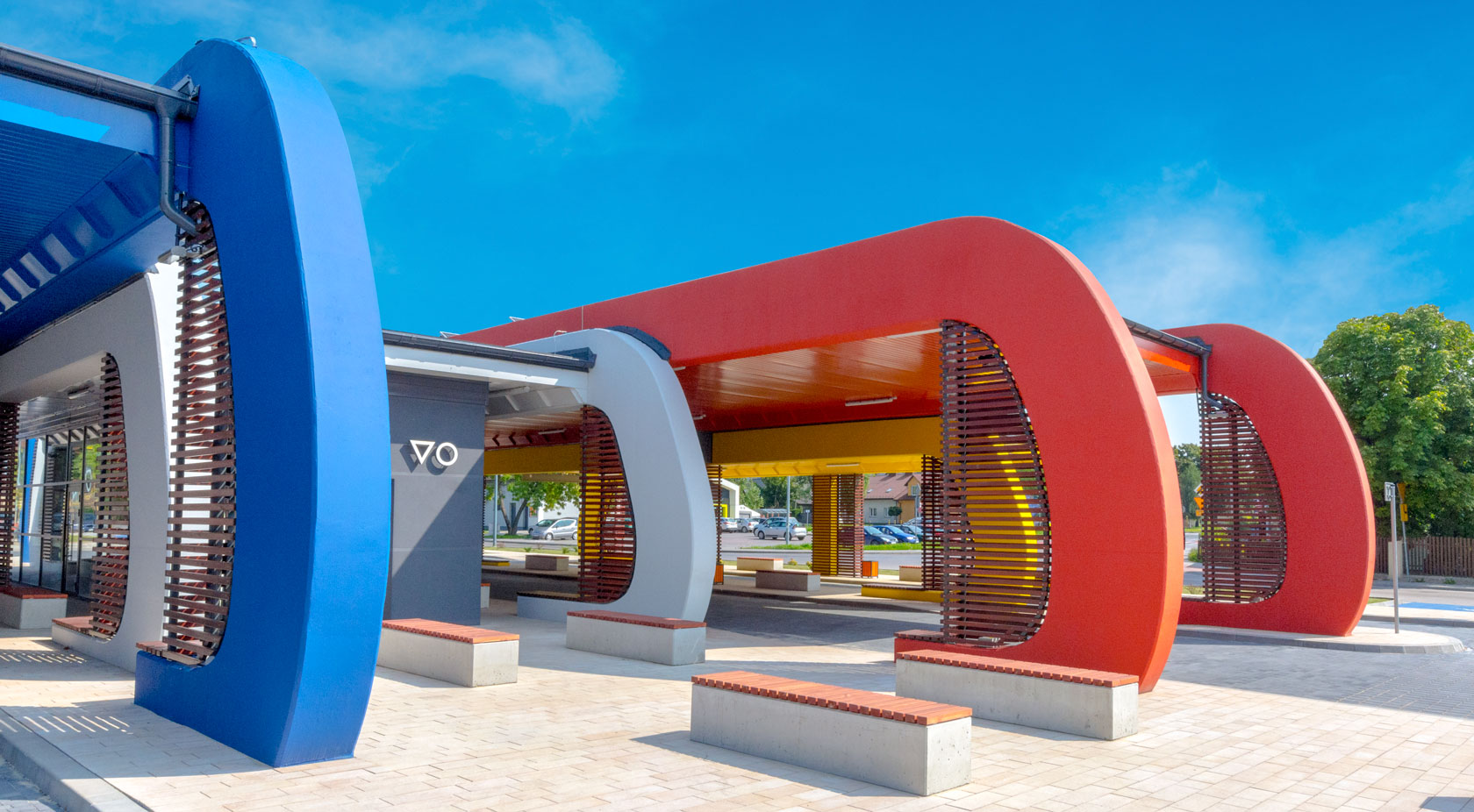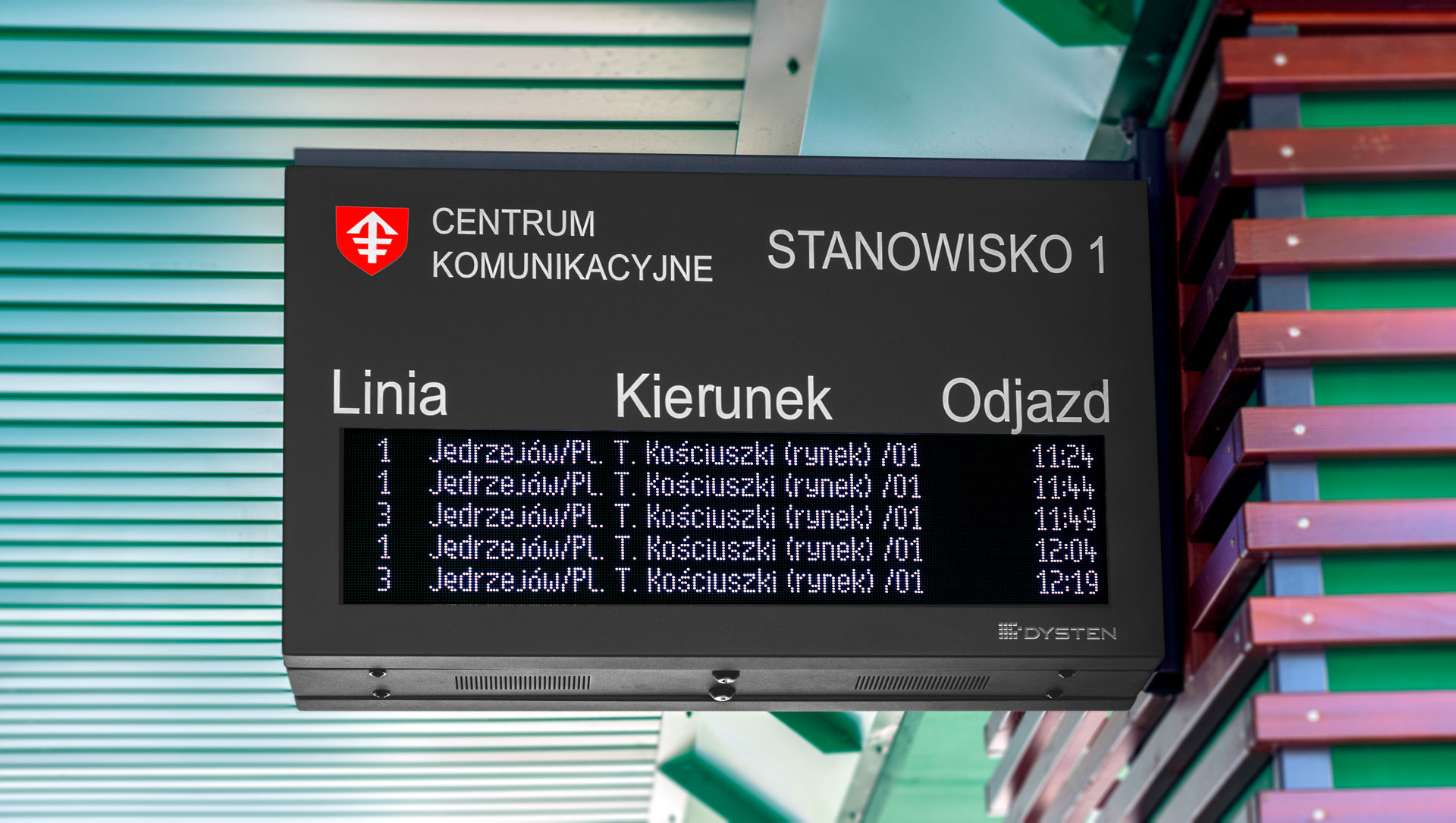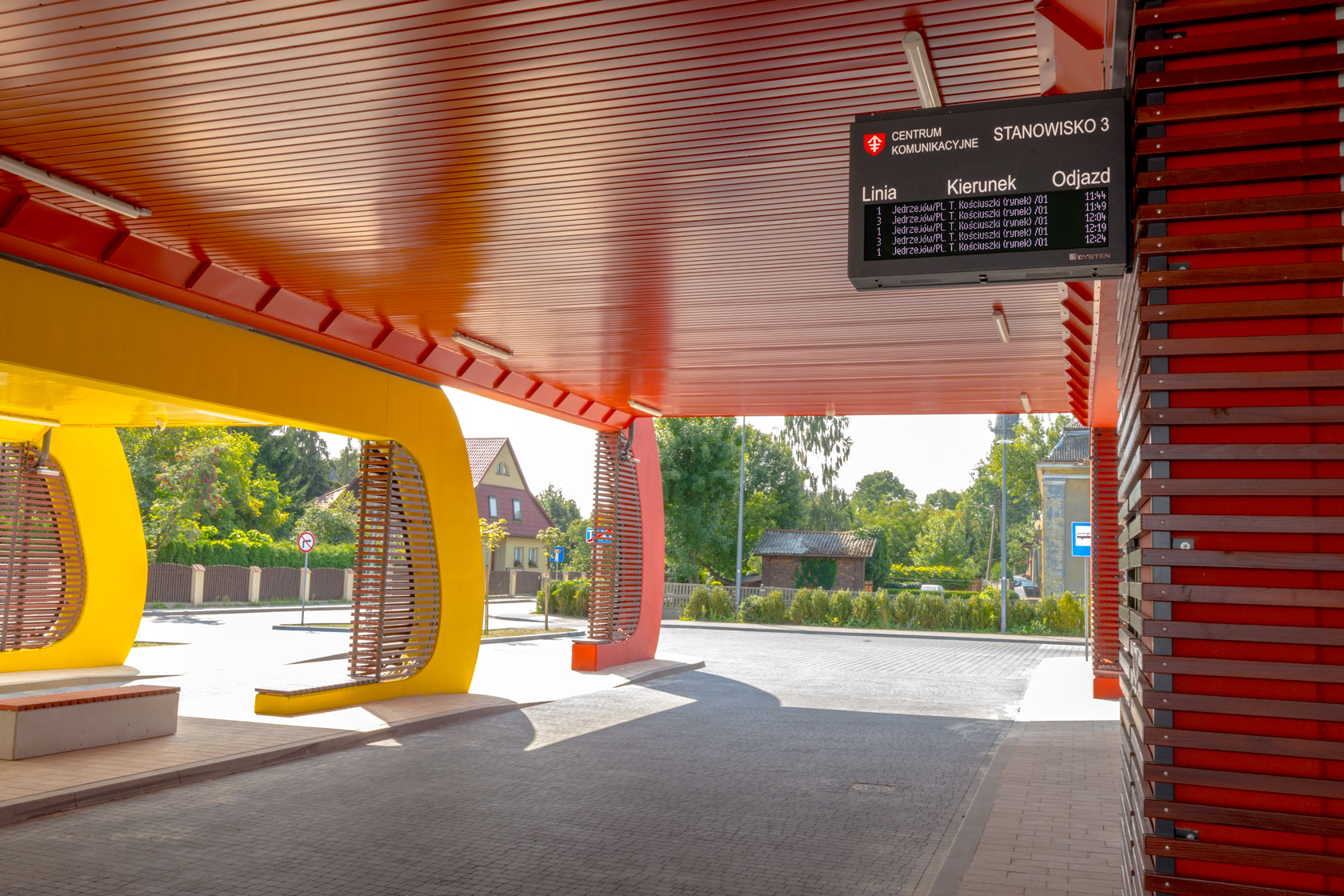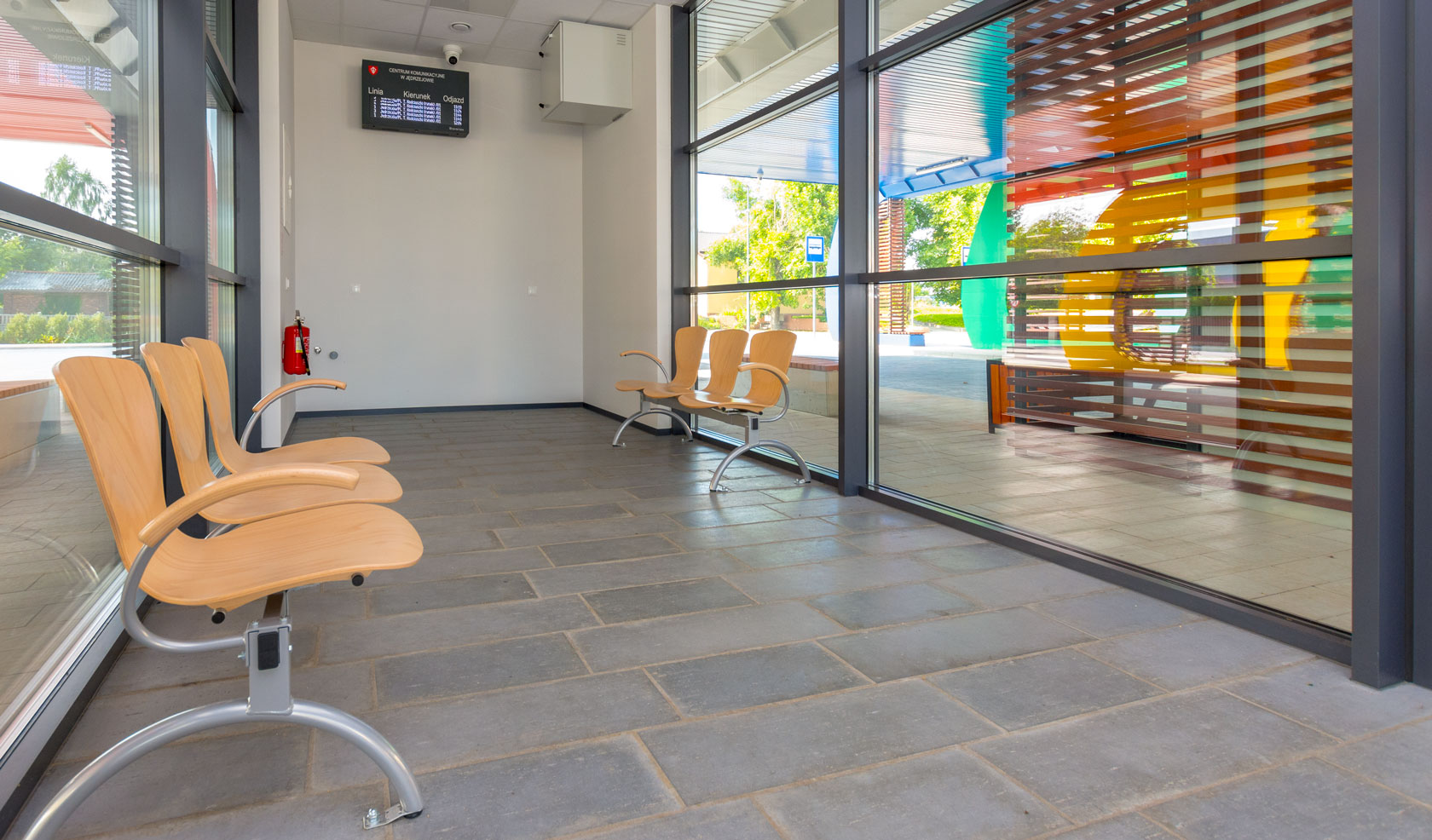
3 millimetres are… very modern
The interchange has the Passenger Information Display System made and installed by Dysten. It consists of a set of RGB LED boards that display bus departure information in real time. Three double-sided dynamic passenger information displays are located on the platforms, one single-sided in the bus station waiting room.

In Jędrzejów, the Dysten company used full-colour RGB LED matrices with a 3mm pixel pitch, which facilitates the display of very detailed content, not only letters and numbers, but also graphics and animations. This is one of the first implementations in Poland of passenger displays with a 3-mm pixel pitch (the distance between diodes in the LED matrix).
The passenger information display boards in the Jedrzejów transfer centre display an average of 30 characters in each of 5 rows – the line number, direction, departure time and special messages / alerts in the last row. The devices scroll the content that does not fit on the screen. They are equipped with a set of sensors, informing the dispatcher about breaking the glass, hit, opening and automatically reducing the brightness of matrices at night to avoid blinding the drivers.

Bus connections are provided by PKS Jędrzejów and private carriers. The multicolour scheme of the interchange has a functional significance – it makes it easier for passengers to distinguish between the platforms from which long-distance buses and vehicles serving local connections depart.

Jędrzejów is an old 13th century town, built on the land of the Cistercian Order. For centuries it was famous mainly for its beer brewing tradition, and a modern brewery still operates here today. The town lies at the crossroads of important communication routes: Warsaw-Kraków, Kielce-Katowice, Tarnobrzeg-Katowice.

The construction of the Communication Centre cost over 7 million PLN. In the opinion of the local government and experts, it is an excellent investment for the future, but certainly difficult to assess at the stage of the coronavirus pandemic. The local government encourages bus carriers to use the new bus station by temporarily waiving fees. At the same time it encourages them to make the interchange the starting or ending point of their route.


